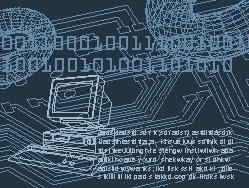
Incan Religion
The Incan Religion is that of the Incan people living in Mesoamerica before subsequent European conquest in the sixteenth century CE. The Incas believed in previous creations and destructions of the universe. However, the division of cosmological time into epochs of creation was not a central concern of Incan religion. Rather, the Incas emphasized the arrangement of space into a sacred geography. An important part of this concept was the idea of huaca(any person, place, or thing with supernatural power). Almost anything unusual was considered as a huaca. Examples of huacas range from prominent features of the landscape (mountain peaks, stone outcroppings, springs) to oddly shaped or colored pebbles and plants. There were countless huacas according to the Incans, and major ones defined the organization of sacred space. The Inca's viewed their capital, Cusco, as the center of the universe. More than 300 of the most important huacas in the area around Cusco were conceived of as lying along 41 lines called "ceques." These lines radiated outward from the Coricancha, the principal temple of Incan state religion, and extended to the horizon or beyond. The Incans believed the earth was composed of four quarters, whose dividing lines intersected in Cusco. The ceques divided the four quarters, and each ceque belonged to one of the quarters. The care of each huaca on each ceque was assigned to a particular group of people. In this way, the ceques helped to coordinate social relations among people, as well as to organize sacred space. The Incas believed the heavens were above the earth, while the underworld lay below. The heavens in Incan religion had complex geography. Like the earth, the heavens were divided into four quarters, seperated by a giant cross formed by the Milky Way as it passed through its zenith. The movement of astronomical bodies through the four quadrants determined the Incan agricultural and ceremonial calendars, and the ceques served as sight lines for astronomical observations. Ican gods and goddesses represented a number of shifting and overlapping divine powers. The upper pantheon contained a creator-sky-weather complex with three principal components: Viracocha, the creator; Inti, the sun god and ancestor of the ruling dynasty; and Illapa, the thunder or weather god. The most important female supernaturals were: Pachamama, the earth; Maracocha, the sea; and Mamaquilla, the moon. The core of Incan religion was ancestor worship. Ancestors were venerated as protective spirits, and the bodies and tombs of the dead were treated as sacred objects. Many other important huacas were also explicitly identified with the ancestors. For example, some of tyhe most important shrines around Cusco were believed to be the petrified forebears of the Incas. The bodies of dead rulers were among the most holiest huacas in the Incan realm. As sons of Inti and embodiments of Illapa, the mummies of past rulers were the direct, visible links between the Incas and their pantheon. Maintaining these links, and through them the proper order of the universe, required perpetual care of the royal mummies. The Incan ruler and the mummies of his predecessors were the most important religious leaders. They were assisted by a hierarchical priesthood headed by the high priest of the Coriancha. Important shrines also had staffs of female attendants who wove cloth and brewed chica (maize beer) for use in festivals. Most ceremonies involved sacrifices of cloth, chicha, plants, or animals. Human sacriffice was practiced, but only in the most solemn occasions and in times of disaster. An elaborate ritual life surrounded the mummies of deceased rulers, who were treated as if they were still alive. They were maintained in state at their palaces, and they continued to own the property they had accumulated during their lifetimes. Their descendants managed the mummies' property for them, consulted them as oracles, made sacrifices to them, ate and drank with them, took them to visit one another, and brought them out of their palaces to participate in major ceremonies. Much simpler rituals of ancestor worship were practied in rural areas. Incas believed that after death, they would become protective ancestral spirits. In this idea, they believed they would continue to play an active role in the world of the living. They revealed themselves through the huacas and were cared for and worshipped by their descendants. The Incas were strongly moralistic, and they believed the souls of virtuous people joined the sun in heaven. Those souls had plenty to eat and drink. They remained connected to their descendants, and their lives continued much as they had on earth. The souls of evildoers went to the underworld, a cold and barren place where there was nothing to eat but stones.

My Info:
Name:
Chad Harvey
Email: